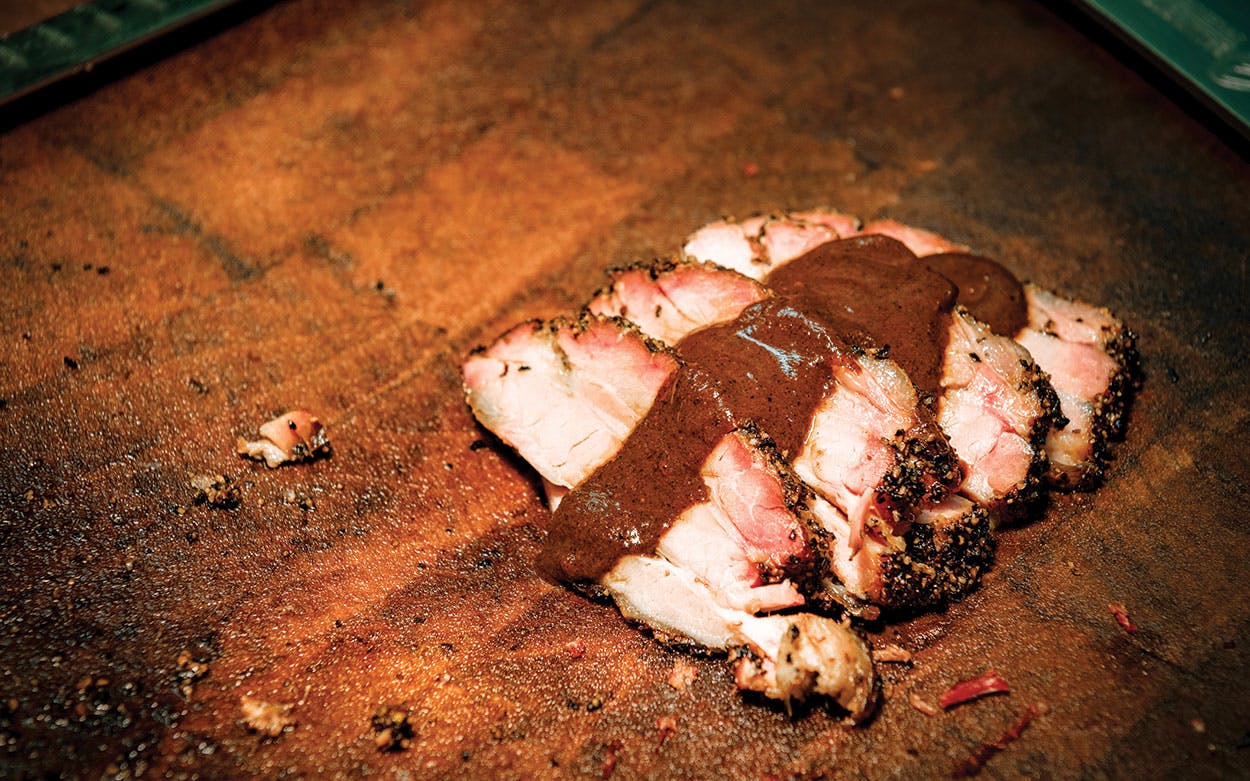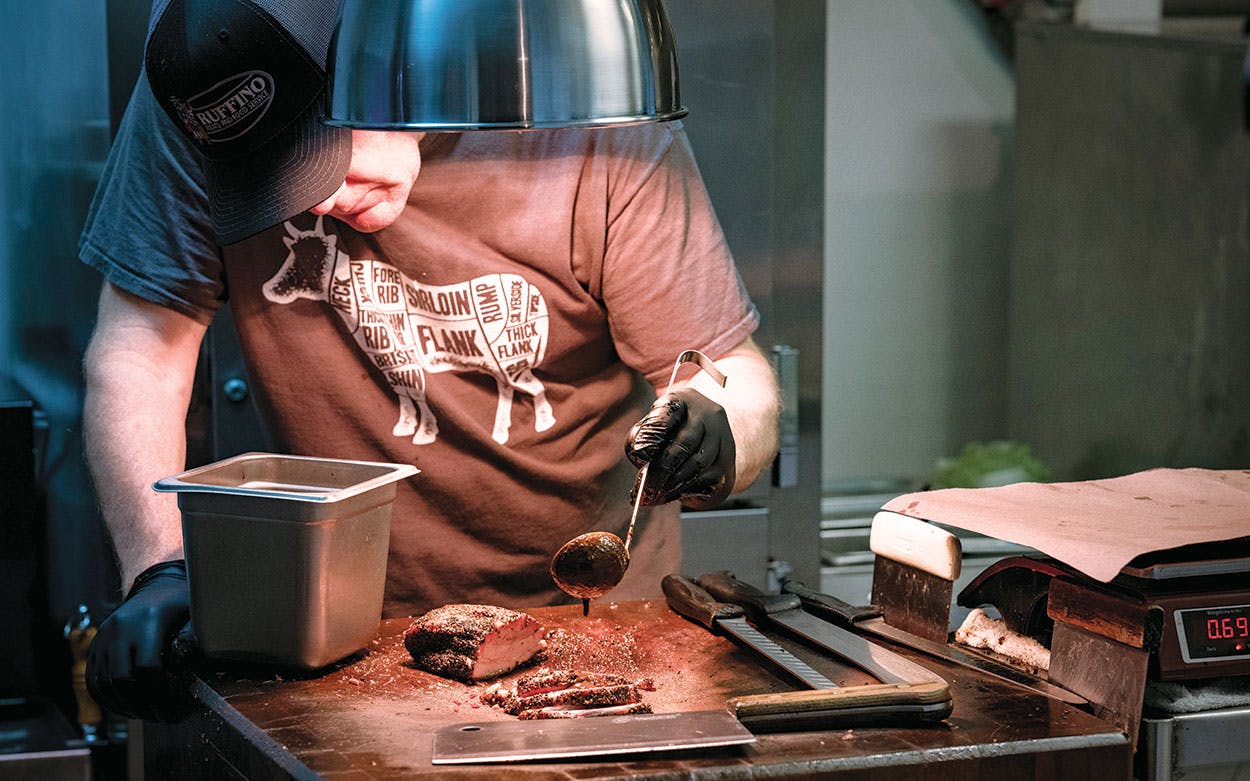As eaters, we rarely consider the cost of the items we don’t pay for at barbecue joints. Pickles, onions, and white bread often end up in the trash without a thought, let alone a feeling of guilt. And how often have you generously sampled the barbecue sauce varieties from your local pitmaster while wasting most of it, or maybe filled a cup meant for iced tea with your favorite sauce? For Scott Moore Jr., co-owner of Tejas Chocolate Craftory in Tomball, it was a paper boat filled with mole barbecue sauce, visibly perched in a trash can, that sent him over the edge. That’s when they decided against providing the most expensive barbecue sauce in Texas for free.
Tejas Chocolate Craftory gained statewide fame after being named the number six barbecue joint in Texas in last year’s Texas Monthly Top 50 BBQ list. It had already made a name for itself locally by then, both for the excellent bean-to-bar chocolate on which Scott and his partner, Michelle Holland, founded the place, and for the barbecue they added in 2013 when chef Greg Moore (Scott’s brother) joined the team. The more their customer base grew, the quicker their mole sauce disappeared. “I know what goes into making it,” Scott says. It’s both time-intensive and expensive, which is why the trash can incident was so galling. The help-yourself Crock-Pot went away, and the mole sauce is now sold behind the counter for $1 a cup. A larger tub is available for $8, but by no means is it a money-maker.

The idea for the sauce came about long before Tejas was known for barbecue. They were selling their chocolate bars at farmers markets when they decided to add pulled-pork sandwiches. Greg Moore needed a sauce to keep the pork moist at the market, but didn’t want anything store-bought. “We were looking for ways to integrate [chocolate] into the barbecue without screwing up the basics of Texas barbecue,” Greg recalls. He thought mole would do the trick. The expense wasn’t a consideration. Barbecue was still the side business.
Greg enjoyed playing around with different local ingredients, like Texas pecans and pepitas, to build the mole. He settled on a combination of four dried chiles—arbol, mulato, chipotle, and ancho—along with 70 percent dark chocolate and dried figs for sweetness. The raw ingredients alone cost $130 for a single batch, which makes about 2 1/2 gallons of mole barbecue sauce. Greg calls it barbecue sauce rather than traditional mole because it’s thinned with rice vinegar as the final step. He admits, “Turning it into a barbecue sauce was honestly kinda scary.” He called the thought of adding vinegar to a from-scratch mole “sacrilege,” but the finished product was more pourable with a slight acidic bite. It was just what he’d been searching for to complement the barbecue.
Scott says the sauce is also popular with the smoked turkey fans at the restaurant. He likes it best on their tender, smoked pork belly. The sauce provides an earthy depth of flavor, which is a nice counterpoint to the rich fattiness of the belly. It works great in a pulled-pork taco, but honestly, this mole sauce might be equally as good with just the corn tortillas. And who needs rum sauce when you can drizzle mole sauce over a cup of chocolate bread pudding? It works, I promise.

Greg makes two batches of mole a month. I had images of a grandmother slowly stirring a pot for hours, but the mole starts with more drama. The chili mixture and the nut mixture are fried in separate batches at high heat in bacon fat to start. Each batch is blended to a paste, then fried together in the same hot cazuela. “If it doesn’t splatter everywhere, you’re not doing it right,” Greg jokes. As it fries over high heat, the mixture reduces. The volume is then built back up slowly with chicken stock. That’s when the hours of simmering and stirring begin. It takes an entire day to get to the finished product. When factoring in the raw ingredients and the labor required to make it, Greg figures he’d need to charge $100 a gallon to eke out some profit. That’s about four times what you’d pay for a gallon of commercially bottled barbecue sauce at a big-box retail store. For now, a visit to their storefront in Tomball is needed to get it one cup at a time. After a bite, you’ll be glad the most expensive barbecue sauce in Texas only costs a dollar.








